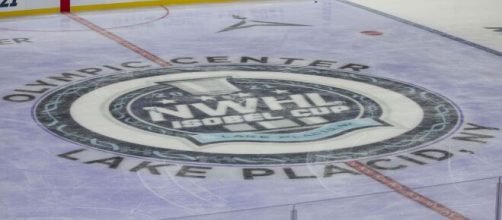The National Women's Hockey League is the top league for women's ice hockey in the world. It's still a relatively new league, but it had been doing well and rising in popularity.
But, like so many other sports leagues around the world, the COVID-19 pandemic dealt the NWHL a blow. And, again like many different leagues, the NWHL opted for a so-called 'bubble' format. But, sadly, it wouldn't end up going all that well.
Championship game canceled
The technical 2020-21 season of the National Women's Hockey League will not end with a champion. It's only technically the 2020-21 season, seeing as all of the games were actually just played in 2021.
The entirety of the abbreviated season was played in Lake Placid, New York. And, as noted by The Ice Garden, problems quickly made themselves apparent. Metropolitan Riveters left-winger Tatyana Shatalova was suddenly mysterious absent. The team was exceptionally vague on details, but Shatalova indicated she was sick on social media.
It's unclear whether or not it might have been related to COVID-19. But it set the stage for a tumultuous, if brief, season. ESPN documents that two of the league's teams would withdraw from play altogether before it was over. But things continued. And ultimately, the Boston Pride and the Minnesota Whitecaps were set to face-off for the league championship.
The winner would lay claim to the Isobel Cup.
She was named for Lady Isobel Gathorne-Hardy. She was one of the first women to play ice hockey and a daughter of Frederick Stanley. Stanely was a United Kingdom politician and governor-general of Canada. A fervent ice hockey enthusiast, he's responsible for what is now the Stanley Cup. The iconic championship trophy for the National Hockey League.
However, cases of COVID-19 diagnoses kept climbing. Enough so that the championship game was eventually postponed with the hope of playing at a later date. But shortly after that, it was canceled altogether.
The game was supposed to be majorly telecast
The cancelation of the match-up for the Isobel Cup might be even rougher than it would normally be.
It was supposed to have been nationally broadcast around the United States. It would've almost undoubtedly been the biggest broadcast in the league's history.
It's clearly a missed opportunity for the National Women's Hockey League. How big of a potential blow it might be to the league remains to be seen.
The current National Women's Hockey League is the fourth attempt at a league of its kind in North America. And has, perhaps, so far been the most promising. Similar to the National Women's Soccer League. Which has seemed to gain the most traction for a North American women's professional league. It's the third attempt at one.


